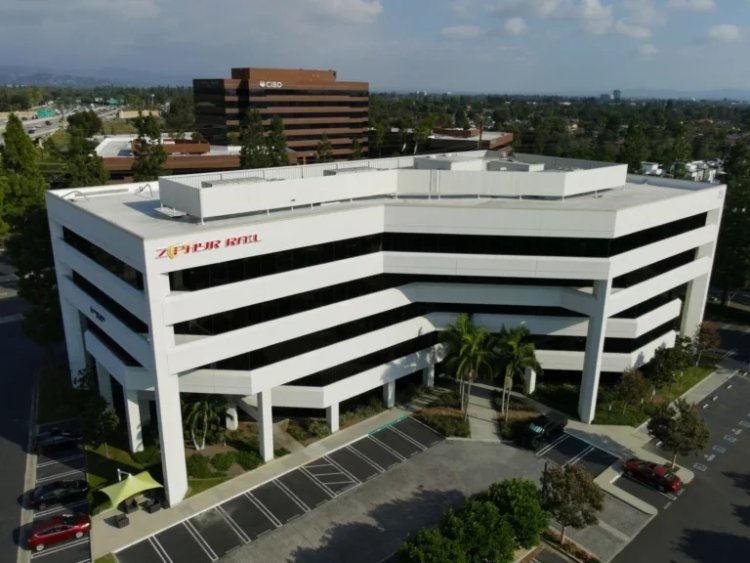
In the world of industrial and structural applications, pipes play a critical role in transporting fluids, gases, and even solids. One of the most widely used materials in pipe manufacturing is carbon steel, thanks to its excellent mechanical properties, affordability, and versatility. Among the different types of carbon steel pipes available, the Carbon Steel ERW Pipe stands out for its widespread use and reliable performance.
This article explores the various types of carbon steel pipes, with a focus on Carbon Steel ERW Pipe, and their diverse applications across industries.
What is Carbon Steel?
Carbon steel is a type of steel where the main alloying element is carbon. It can be classified into three categories based on carbon content:
- Low Carbon Steel (Mild Steel): 0.05–0.25% carbon
- Medium Carbon Steel: 0.25–0.60% carbon
- High Carbon Steel: 0.60–1.25% carbon
Each type has unique properties and is used in different industrial applications depending on hardness, ductility, strength, and machinability.
Types of Carbon Steel Pipes
Carbon steel pipes can be produced using various methods, each resulting in different pipe types. The most common types include:
1. Seamless Carbon Steel Pipe
These pipes are manufactured without a weld seam. They are produced by extruding the metal to the desired length. Seamless pipes are known for:
- High strength and pressure resistance
- Use in high-temperature and high-pressure environments
- Applications: Oil & gas, power generation, chemical industries
2. Carbon Steel ERW Pipe (Electric Resistance Welded)
Carbon Steel ERW Pipe is produced by rolling metal and welding it longitudinally across its length. It is highly popular due to its efficiency and cost-effectiveness. Characteristics include:
- Smooth and uniform wall thickness
- Economical and quick production
- Suitable for low to medium pressure applications
- Applications: Water supply, fencing, scaffolding, and fire fighting systems
We’ll dive deeper into ERW pipes later in the blog.
3. Spiral Welded Carbon Steel Pipe
These pipes are made by winding the steel coil into a spiral shape and welding the seam along the length. Used primarily in large-diameter applications.
- High strength and structural stability
- Ideal for transporting water, oil, and gas in long pipelines
4. LSAW (Longitudinal Submerged Arc Welded) Pipe
These pipes are made by bending and welding steel plates. They offer high strength and are used in the oil and gas industry for offshore and long-distance pipelines.
Carbon Steel ERW Pipe: Features and Benefits
Carbon Steel ERW Pipe is manufactured using high-frequency welding techniques. The edges of the steel strip are heated and fused together to form a solid bond.
Key Features:
- Excellent dimensional accuracy
- Smooth internal and external surface finish
- Economical for mass production
- Versatile for structural and fluid transport use
Advantages:
- Cost-effective: Less expensive than seamless pipes
- Availability: Easily available in various diameters and thicknesses
- Lightweight: Easier to transport and handle
- Weldability: Suitable for applications requiring welding and fabrication
Uses of Carbon Steel ERW Pipe
Thanks to its adaptability and strength, Carbon Steel ERW Pipe is used in a wide range of industries and applications:
1. Water and Gas Distribution
Carbon steel ERW pipes are ideal for transporting water and gas over short and long distances due to their durability and resistance to internal pressure.
2. Structural Applications
In construction, ERW pipes are used in steel structures, frameworks, and buildings due to their high load-bearing capacity and ease of installation.
3. Fire Fighting Systems
These pipes are commonly used in fire sprinkler systems and fire suppression pipelines because of their reliability and compliance with safety standards.
4. Fencing and Scaffolding
Used in temporary and permanent fencing, as well as scaffolding frameworks on construction sites, where strength and cost-effectiveness are crucial.
5. Automotive Industry
ERW pipes are used in making shock absorbers, steering components, exhaust systems, and other automotive parts due to their machinability.
6. Furniture Manufacturing
For making frames, support structures, and other components where precision and light weight are needed.
7. Oil and Gas Industry
Though seamless pipes are preferred for high-pressure oil and gas transport, ERW pipes are used in lower-pressure segments and distribution lines.
Comparison: ERW vs. Seamless Carbon Steel Pipes
| Feature | ERW Pipe | Seamless Pipe |
| Manufacturing Process | Welded from steel coil | Extruded without weld seam |
| Pressure Resistance | Moderate | High |
| Cost | Lower | Higher |
| Surface Finish | Smooth | Variable depending on process |
| Availability | Easily available | Limited in certain sizes/thickness |
When cost and availability are critical, Carbon Steel ERW Pipe is the preferred option for many industrial applications.
Grades and Standards
Carbon steel pipes are manufactured to comply with various standards depending on the region and industry, such as:
- ASTM A53, A106 – U.S. standards for carbon steel pipes
- IS 1239, IS 3589 – Indian standards for ERW pipes
- API 5L – Oil and gas industry standard
The grades typically denote the chemical composition and mechanical properties such as tensile strength and yield strength.
Choosing the Right Pipe for Your Project
When selecting carbon steel pipes, consider the following factors:
- Operating pressure and temperature
- Fluid type (water, gas, oil, chemicals)
- Environmental conditions (corrosive, humid, etc.)
- Structural load requirements
- Budget and availability
Carbon Steel ERW Pipe remains a top choice for many projects because it balances performance, affordability, and ease of fabrication.
Conclusion
Carbon steel pipes, especially Carbon Steel ERW Pipe, are essential components in various industries around the world. They offer flexibility, strength, and affordability, making them an ideal choice for transporting fluids, gases, and structural applications.
Whether you’re working on infrastructure development, industrial piping, or even automotive applications, understanding the types of carbon steel pipes available and their appropriate uses can lead to smarter, more efficient project execution.With continued advancements in manufacturing technology, Carbon Steel ERW Pipe continues to evolve and maintain its position as a reliable, cost-effective solution in the modern industrial landscape.





